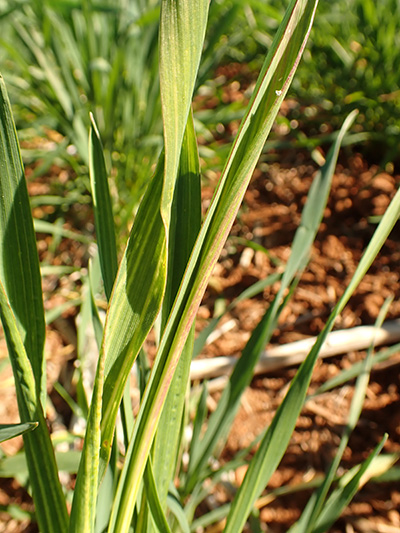Grain growers across central and northern New South Wales are being advised to be ‘alert, not alarmed’ as reports of Russian wheat aphid (RWA) in winter crops come in from across the region.
NSW Department of Primary Industries (NSW DPI) entomologist at the Tamworth Agricultural Centre, Dr Zorica Duric says RWA had been detected in crops on the Liverpool Plains and around Moree in recent weeks.
The experienced scientist is urging growers and agronomists to monitor crops for RWA, and use the RWA action threshold calculator, to help determine the cost effectiveness of chemical treatment.
Initially detected in Australia in 2016, RWA has established itself in south-east Australia and was found in Western Australia for the first time in 2020.
 For more information refer to the GRDC Russian Wheat Aphid Resources page or contact your regional GRDC office. Photo: NSW DPI
For more information refer to the GRDC Russian Wheat Aphid Resources page or contact your regional GRDC office. Photo: NSW DPI
“Although the infestation levels are currently low, at less than two per cent, there is a rapid spread of the aphids due to favourable temperature and windy conditions, and both treated and untreated crops are showing signs of infestation so growers should be aware,” Dr Duric says.
The Grains Research and Development Corporation (GRDC) has invested in a research, development and extension (RD&E) project led by SARDI with research partners, including NSW DPI, to understand the potential impact of RWA and develop support tools like the threshold calculator to help inform grower decision-making.
GRDC pests manager Dr Leigh Nelson says that while RWA does not transmit viruses, severe infestations can significantly reduce cereal yields.
“Although RWA does not transmit viruses, the aphid's feeding can cause chlorosis and necrosis of infested leaves, disrupt head development, and in some cases, lead to plant death,” she says.
“RWA thrives on weedy grasses, especially barley grass and Bromus species. It persists throughout the summer green bridge on grassy weeds, volunteer cereals and warm-season grasses.”
However, Dr Duric says the presence of RWA in a region doesn't guarantee its presence in crops, and its presence in crops doesn't always result in yield loss. She says fortunately a variety of natural enemy species have been observed targeting RWA in Australian cropping regions.
"We are encouraging growers to regularly monitor for aphid presence in established winter crops and use the RWA action threshold calculator to determine the cost-effectiveness of chemical intervention,” she says.
“Growers should take an integrated pest management approach and implement the ‘FITE’ strategy (Find, Identify, Threshold and Enact approach) now the presence of RWA has been confirmed."
For more information refer to the GRDC Russian Wheat Aphid Resources page or contact your regional GRDC office.

























































